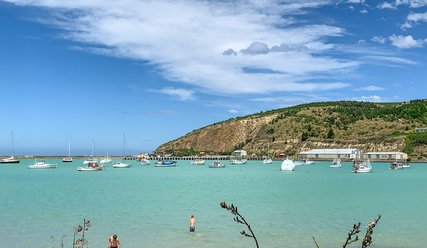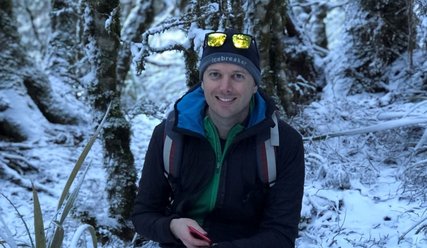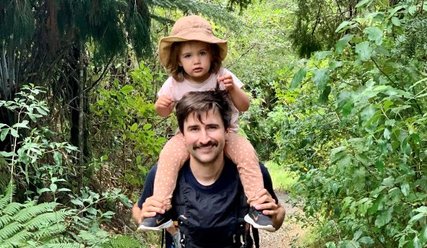Rural GP hooked: 'Why would you want to live anywhere else?'
Caitlin Whitford has quickly become a deft hand at removing a wayward fish hook.
The GP's practice even has a trophy wall of ‘Turangi Special' lures and flies extracted from their human casters.
“Fishhooks. We get very quick at removing them,” she explains.
“I’ve seen quite a few people come in with them in their lip because they have put the hook in their mouth, tried to tie a knot and have slipped and pulled it into themselves. But also fingers, ears.
The medical dramas that play out at Turangi’s Pihanga Health may be more rural than Shortland Street-racy but for young doctor Caitlin Whitford there’s plenty of variety – from general practice to emergency medicine.
“I really like it. I won’t be moving any time soon,” said the 28-year-old who has been in Turangi for a year, where she is continuing the Rural Hospital Medicine Training Programme.
While Turangi may not be stat! central, Whitford, this year’s inaugural recipient of the Dr Amjad Hamid Medal as top candidate in a paper on cardiorespiratory medicine in rural hospitals, can still recall a week with a trifecta of heart and lung incidents.
In that week of more serious incidents one was an aortic dissection – where the main artery tears. The torn flap or blood filled pocket can then block blood flow elsewhere and lead to severe chest or upper back pain and loss of consciousness.
“We saw one of those, we saw a pulmonary embolism – a blood clot on the lung – and a conscious ventricular tachycardia (a life-threatening heart rhythm that results in a rapid, inadequate heartbeat). Oftentimes when people go into VT that's when they arrest – but the patient was conscious....
“So it can be eventful. But also we can have run-of-the-mill stuff, snotty noses.”
A small population (the town itself is around 3000) makes it hard to coax interesting work stories out of Whitford – aware of patient confidentiality.
But there was the baby delivered at the practice, the first in five or six years and supposed to make its arrival at Rotorua Hospital.
“I think the whole community knows about that one. Mum turned up ‘aaaah my baby’s coming.’”
Dr Rene Lenoir delivered the baby but Whitford was on hand.
“I just looked after it once it was out. I was ready to resuscitate the baby. They didn’t need me. But it’s another one to add to the things that have happened at Pihanga.”
Big or small, Whitford is enjoying it all – especially the collaborative atmosphere of the rural practice that means the GPs have to be adaptable and can be paged for prime calls when the one local ambulance is unavailable.
“We provide a number of different services for the community where otherwise there would probably be a gap.”
The ex-Tokoroa student who did all her secondary schooling at Forest View High School, laughed that she had not gone far to university and now come back.
Her sheep and beef farmer fiancé in Taumarunui was a definite draw, she admitted, “but I was always going to be in the Central Plateau somewhere…”
The commute between the two centres can be a drag though: “I drive past the mountain every day on my way to work. Why am I going to work? Why am I not going skiing? I like the outdoors. I dabble in a bit of everything. I think that’s one of the big draws of this part of the country, it’s just beautiful, it’s fantastic.”
One of the real challenges in rural medicine is that access to health care is more limited than in larger centres.
“We’re kind of it, in Turangi. Us and Tuwharetoa Health... We’ve got a lab but basically for anything else they have to go through to Taupō or Rotorua and that in itself has challenges for people – travel, time, cost and after hours when we are not there…”
This definitely meant people presented on a Monday with something that should have been seen on Saturday morning, she said.
“But there are some pros to that. I think we can be pretty flexible as a team... You might not be the best person for that job, but we all pull together, adapt and change and make it work, essentially. I think in rural environments people tend to be a bit more like that.”
And the role has allowed her to exercise her interest in both emergency medicine and chronic care, following people up.
“Sometimes they present to us with their heart attacks, strokes, broken arms, burns, all sorts of things, so we see them quite often acutely and see them ongoing as well.”
Stability has enabled the practice to go back to the future, family GP style.
“There was a period there where Turangi didn’t have a consistent staff of doctors, lots of locums, lots of changeover. People are tending to see the same doctor more often, so you can build more of a rapport, whereas before it was kind of a ‘yeah come in, be seen by everyone.’ And I think patients are really starting to like and appreciate that.”
With three College Fellows at Pihanga and two developing their skills, practice manager Hilary Morrish Allen echoed Whitford’s sentiments about a great mix of staff, which included nurse practitioner Tracey Liddell.
While there was no definitive (full time equivalent) GP to patient ratio in New Zealand, the College recommended between 1:1400 and 1:1600, she said.
Pihanga’s effective overstaffing in terms of registered patients (4540) was countered with a high workload of casual patients, such as visitors in holiday times.
In the last 12 months the practice had looked after 4041 casual patients in addition to its registered patients, said Morrish Allen.
Its registered patient numbers were growing by around 20 per month.
Whitford felt one year in she was now really getting to know her regulars.
“It makes my job so much easier. I can remember coming in, and they’ve got a really complex background, and they had booked a 15 minute appointment to sort through everything.”
While a number of things steered her towards medicine, fittingly enough one was seeing doctors come and go, as she grew up in small-town Tokoroa.
“We had a little granny flat that was rented out to the head doctor’s surgery for locums to stay in, and we just saw the sheer number of locums, six months, six months...I saw all that quite close up.”
A potential interest in research at school morphed: “over time I realised actually I wanted to be dealing more with people rather than doing lab work.” That along with observing a friend with cystic fibrosis “watching her journey as well, in the medical field, and the impact doctors had.”
Those experiences have been Turangi’s gain.
“Small community. A lot of people say why would you want to work in a place like that, what is there? And you actually look around and there’s so much on offer.
“Small communities pull together in times of need, help each other out, you get to know everyone, get to know the links in families and whanau…”
Not to mention, that it’s “right on the door of lake Taupō, mountains, National Park, mountain biking, skiing, water skiing. Why would you want to go anywhere else?”


